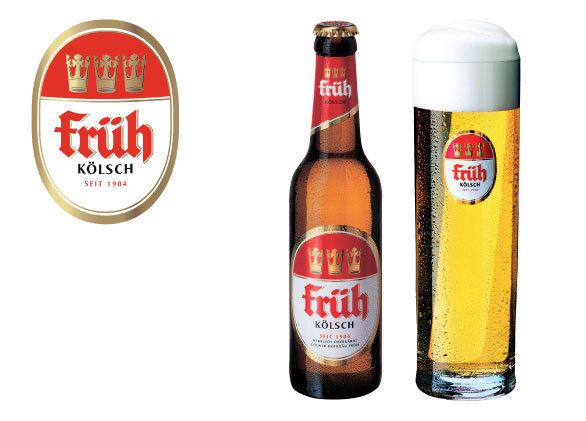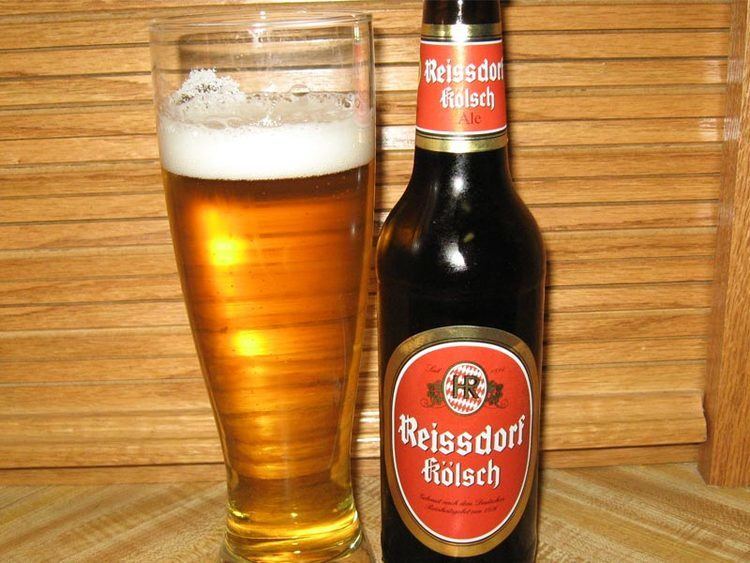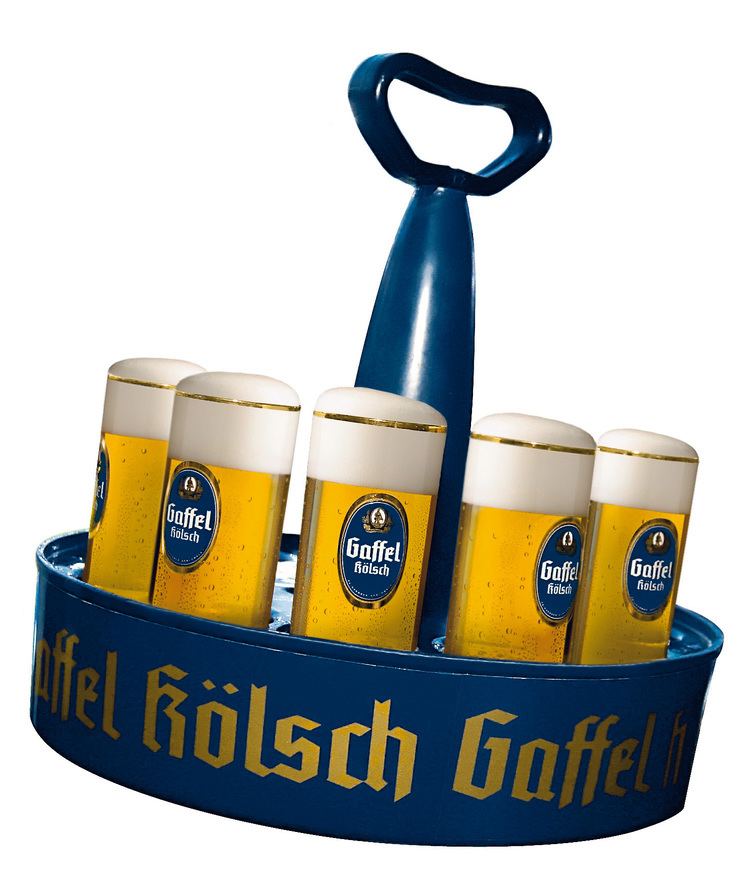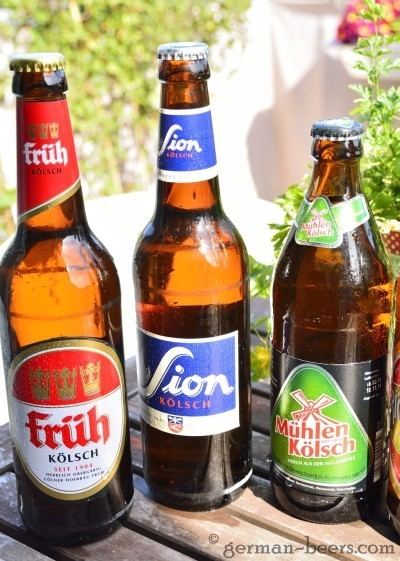Alcohol by volume 4.4%–5.2% Original Gravity 1.044–1.050 ABV range 4.4% – 5.2% Color Golden Yeast Ale | Yeast type Top-fermenting Bitterness (IBU) 20–30 Final Gravity 1.007–1.011 IBU range 18 – 30 Malt Vienna, Pilsner | |
Commercial examples Brauerei zur Malzmühle, Sünner Kölsch Similar Pilsner, Wheat beer, Porter, Stout, Lager | ||
Kölsch ( [kœlʃ]) is a beer brewed in Cologne, Germany. It is a clear, top-fermented beer with a bright, straw-yellow hue similar to other beers brewed from mainly Pilsener malt.
Contents

Kölsch is warm fermented at around 13 to 21 °C (55 to 70 °F), then conditioned by lagering at cold temperatures. This style of fermentation links Kölsch with some other central northern European beers such as the Altbiers of western Germany and the Netherlands.
Kölsch is defined by an agreement between members of the Cologne Brewery Association known as the Kölsch Konvention. It has a gravity between 11 and 16 degrees Plato.

History

The term Kölsch was first officially used in 1918 to describe the beer that had been brewed by the Sünner brewery since 1906. It was developed from the similar but cloudier variant Wieß (for "white" in the Kölsch dialect). It never became particularly popular in the first half of the twentieth century, when bottom-fermented beers prevailed as in the rest of Germany. Prior to World War II Cologne had more than forty breweries; this number was reduced to two in the devastation and its aftermath.

In 1946, many of the breweries managed to re-establish themselves. In the 1940s and 1950s, Kölsch still could not match the sales of bottom-fermented beer, but in the 1960s it began to rise in popularity in the Cologne beer market. From a production of merely 50 million liters in 1960, Cologne's beer production peaked at 370 million liters in 1980. Recent price increases and changing drinking habits have caused economic hardship for many of the traditional corner bars (Kölschkneipen) and smaller breweries. By 2005 output had declined to 240 million litres.
Thirteen breweries produce Kölsch in and around Cologne, anchored by Früh, Gaffel, Reissdorf and Kölner Verbund. There are also smaller brewers, such as Mühlen-Kölsch or Bischoff-Kölsch. In adherence to the Kölsch Konvention of 1986 Kölsch may not be brewed outside the Cologne region. A few outlying breweries were grandfathered. About ten other breweries in Germany produce beer in Kölsch-style, but are not allowed to call it Kölsch because they are not members of the convention.
In 1997, Kölsch became a product with protected geographical indication (PGI), expanding protection to the entire EU and several countries beyond it. Exports of Kölsch to the United States, Russia, China and Brazil are increasing. Exported Kölsch does not need to strictly comply with the Provisional German Beer Law, the current implementation of the Reinheitsgebot.
Wieß
Wieß (transliterated as Wiess pronounced [ⱱiːs], for "white" in the Kölsch language) is a cloudy, unfiltered version of Kölsch. It had virtually disappeared from the market during most of the 20th century, but has seen a small resurgence in recent years.
Outside Germany
Kölsch is a product with protected geographical indication (PGI) per EU law. The Kölsch Konvention specifically defines the rules to be followed to allow a beer to carry the name Kölsch, which includes that it must be brewed within a 50 km zone around Cologne, Germany.
